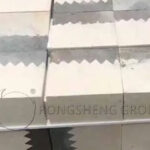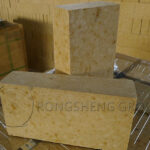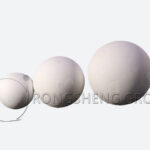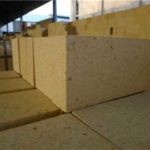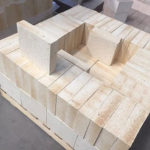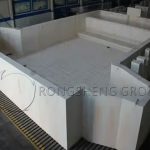High-alumina raw materials refer to aluminum-silicon refractory raw materials with an alumina content of ≥48%, mainly including high-alumina bauxite, mullite, corundum, kyanite minerals, etc., which are one of the most important raw materials for refractory materials. Rongsheng High-Alumina Refractory Material Factory is a refractory material manufacturer with rich production and sales experience. The main products are high-alumina bricks, corundum bricks, mullite bricks, and other high-quality high-alumina refractory materials. Contact Rongsheng Refractory for free samples and quotes.
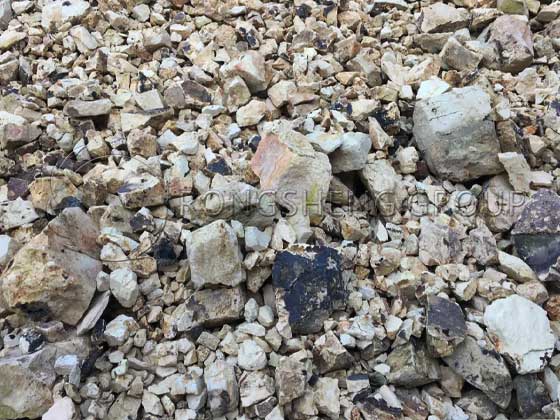
High-Alumina Bauxite
High-alumina bauxite refers to natural bauxite with an alumina content of more than 48% and a low iron oxide content after calcination. It is the main raw material for producing high-alumina refractory materials. High-alumina bauxite can be used in almost all aluminum-silicon refractory materials. High-alumina bricks, clay bricks, high-alumina castables, etc. all use high-alumina bauxite as the basic main material. It is the most widely used and largest amount of all refractory raw materials.
China has rich bauxite resources, and its reserves are among the highest in the world. It is one of the three largest exporters of bauxite for refractory materials in the world (China, Guyana and Brazil). China’s bauxite is highly concentrated. The reserves of Shanxi, Guizhou, Henan and Guangxi account for 90.9% of the total reserves in the country (Shanxi 41.6%, Guizhou 17.1%, Henan 16.7%, Guangxi 15.5%), and the reserves of the remaining 15 provinces, autonomous regions and municipalities with bauxite account for only 9.1% of the total reserves in the country.
- (1) Shanxi’s bauxite deposits (points) are mainly distributed in 42 counties in five large areas, including Xiaoyi, Jiaokou, Fenyang, Yangquan, Yuxian, Ningwu, Yuanping, Xingxian, Baode, and Pinglu. The area is about 67,000 km2, and the proven bauxite reserves rank first in the country. The total resources in this area are estimated to reach 2 billion tons.
- (2) Henan’s bauxite is concentrated in more than 10 counties in three large areas, including Gongxian, Dengfeng, Yanshi, Xin’an, Sanmenxia, Shanxian, Baofeng, Lushan, Linru, and Yuxian, south of the Yellow River and west of the Beijing-Guangzhou Railway. The area is more than 30,000 km2, and the proven bauxite reserves rank second in the country. The total resources are expected to reach 1 billion tons.
- (3) Guizhou’s bauxite deposits are mainly distributed in more than a dozen counties on the north and south sides of the “Qianzhong Uplift”, including Zunyi, Xifeng, Kaiyang, Weng’an, Zheng’an, Daozhen, Xiuwen, Qingzhen, Guiyang, Pingba, Zhijin, Goujiang, Huangping, etc., covering an area of 2,400 km2. The proven bauxite reserves rank third in the country, and the total estimated resources are over 1 billion tons.
- (4) Guangxi’s bauxite is concentrated in Pingguo, Tiandong, Tianyang, Debao, Jingxi, Guixian, Napo, Guohua, Longan, Yongning, Chongzuo and other counties. The proven bauxite reserves rank fourth in the country, and the predicted bauxite reserves are more than 800 million tons.
- (5) Shandong’s bauxite is mainly distributed in Zibo, Xintai, Hongshan and other counties. Its proven bauxite reserves account for 3% of the country’s total reserves.
- (6) In addition, bauxite deposits are also produced in Hainan, Guangdong, Fujian, Yunnan, Jiangxi, Hubei, Hunan, Shaanxi, Sichuan, Xinjiang, Ningxia, Hebei and other provinces (regions).
According to the national standard classification of high-alumina bauxite, detailed indicators of bauxite ore (raw material) and refractory raw material high-alumina bauxite (clinker). Performance indicators of bauxite ore (raw material). Performance indicators of refractory raw material high-alumina bauxite (clinker).
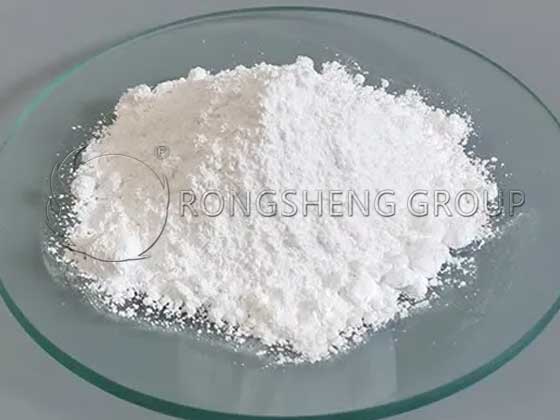
Alumina Raw Materials
Alumina raw materials refer to materials made by electric melting or sintering, with Ⅱ alumina as the main crystal phase and high alumina content, belonging to the trigonal system. Common alumina raw materials include industrial alumina, sintered corundum, fused corundum, etc.
Industrial alumina
Industrial alumina is made by chemically treating alumina raw materials to remove oxides such as silicon, iron, and titanium. It is a high-purity alumina raw material. It is mainly used in the matrix part of high-grade refractory materials with high aluminum content, low impurity content, and strict use requirements, such as fused alumina bricks for the glass industry.
α alumina micropowder is the product of industrial alumina calcination. After the grinding process, its median diameter can reach 19m and has good activity. Due to its fine particle size, large specific surface area, large surface activation energy, and strong activity, it is often used in amorphous refractory materials. The main function is to optimize the matrix, promote sintering, increase fluidity and other construction properties. It is one of the main media of ultrafine powder technology. It is also used in shaped refractory products, where its main function is to optimize the matrix and promote sintering.
Sintered corundum
Sintered corundum refers to corundum made by sintering. The raw material is generally industrial alumina, and also includes a plate-like corundum. It is generally believed that sintered alumina with an alumina content of 99.3~99.7%, a true density greater than or equal to 3.99/cm3, a volume density greater than or equal to 3.439/cm3, and a porosity less than or equal to 2% is sintered corundum used for refractory materials. Sintered corundum has the advantages of high purity, density, high thermal conductivity, high strength, excellent thermal shock resistance and corrosion resistance, and is mainly used to produce high-purity corundum products.
Fused corundum
There are many types of fused corundum, including fused white corundum, fused dense corundum, fused sub-white corundum, fused brown corundum, etc., among which fused white corundum is the most commonly used. Fused corundum has high purity, density, high thermal conductivity, high strength, and excellent corrosion resistance. It has the advantages of acid and alkali resistance, stable volume at high temperature, and low porosity. It is mainly used to produce high-purity corundum products.
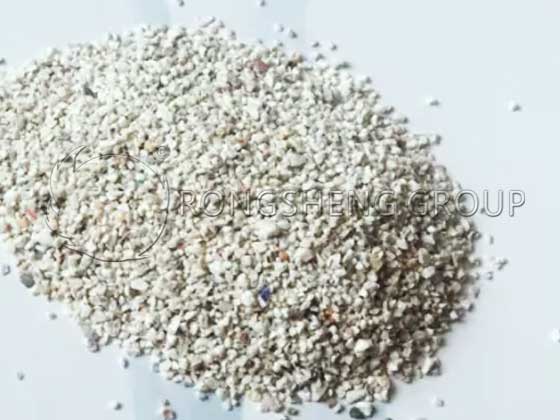
Mullite
Mullite raw materials for refractory industry are generally artificially synthesized, and there are few valuable natural mullite mines. Synthetic mullite is mainly produced by sintering and electrofusion. Mullite has a high total amount of aluminum and silicon in its chemical composition and a low impurity content. In addition to the unique crystal shape of mullite and its excellent properties such as a small expansion coefficient, it is generally used to produce medium and high-grade high-aluminum refractory materials and can be used in parts with harsh working conditions in high-temperature kilns.
Performance indicators of sintered mullite. Performance indicators of electrofused mullite. Sintering method synthesized mullite uses silica, kaolinite, high-alumina bauxite and industrial alumina as raw materials. According to the theoretical composition formula of mullite, it is fully mixed and ground, formed into a blank, and calcined at a high temperature of 1700-1750C in a rotary kiln or shuttle kiln. The general aluminum content is 65~75%, and the mineral composition is 86-99% mullite phase, 0.5~10% corundum phase, and 0.2~10% glass phase.
Fused mullite is made of industrial alumina, high-quality sintered bauxite, high-purity silica and other raw materials, which are mixed in a certain ratio and poured into an electric arc furnace for melting and synthesis. The aluminum content is generally not less than 76%.
Kyanite Raw Materials
Kyanite raw materials include kyanite, andalusite and sillimanite, all of which are isomers. During the crystal transformation of kyanite minerals at high temperatures, the volume expands. The introduction of kyanite minerals into refractory materials is just to use their volume changes to offset the volume shrinkage of refractory materials during high-temperature calcination. Avoid cracking of refractory products, achieve volume stability, and thus increase service life. In addition, the high total amount of aluminum and silicon and low impurity content of kyanite minerals are also its advantages. Therefore, the application of kyanite minerals in refractory materials is also very common, mainly used in medium and high-end refractory materials. Kyanite raw material classification. Comparison of high-temperature conversion performance of kyanite minerals.
Rongsheng Refractory high alumina refractory materials for sale, a high-quality high-aluminum refractory manufacturer.


